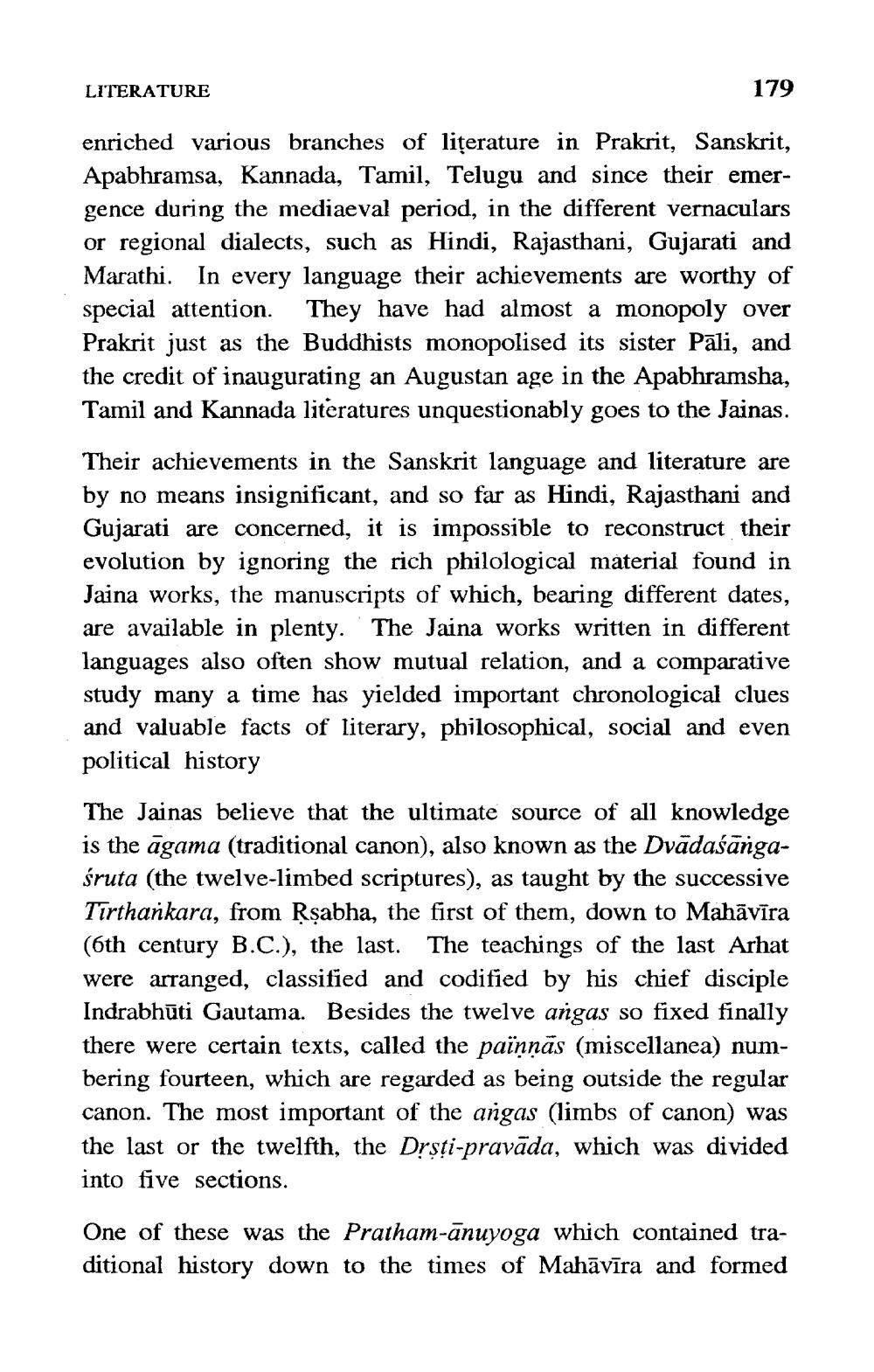________________
LITERATURE
179
enriched various branches of literature in Prakrit, Sanskrit, Apabhramsa, Kannada, Tamil, Telugu and since their emergence during the mediaeval period, in the different vernaculars or regional dialects, such as Hindi, Rajasthani, Gujarati and Marathi. In every language their achievements are worthy of special attention. They have had almost a monopoly over Prakrit just as the Buddhists monopolised its sister Pali, and the credit of inaugurating an Augustan age in the Apabhramsha, Tamil and Kannada literatures unquestionably goes to the Jainas.
Their achievements in the Sanskrit language and literature are by no means insignificant, and so far as Hindi, Rajasthani and Gujarati are concerned, it is impossible to reconstruct their evolution by ignoring the rich philological material found in Jaina works, the manuscripts of which, bearing different dates, are available in plenty. The Jaina works written in different languages also often show mutual relation, and a comparative study many a time has yielded important chronological clues and valuable facts of literary, philosophical, social and even political history
The Jainas believe that the ultimate source of all knowledge is the agama (traditional canon), also known as the Dvādaśāngaśruta (the twelve-limbed scriptures), as taught by the successive Tirthankara, from Rṣabha, the first of them, down to Mahāvīra (6th century B.C.), the last. The teachings of the last Arhat were arranged, classified and codified by his chief disciple Indrabhūti Gautama. Besides the twelve angas so fixed finally there were certain texts, called the painṇās (miscellanea) numbering fourteen, which are regarded as being outside the regular canon. The most important of the angas (limbs of canon) was the last or the twelfth, the Dṛṣṭi-pravāda, which was divided into five sections.
One of these was the Pratham-anuyoga which contained traditional history down to the times of Mahāvīra and formed




